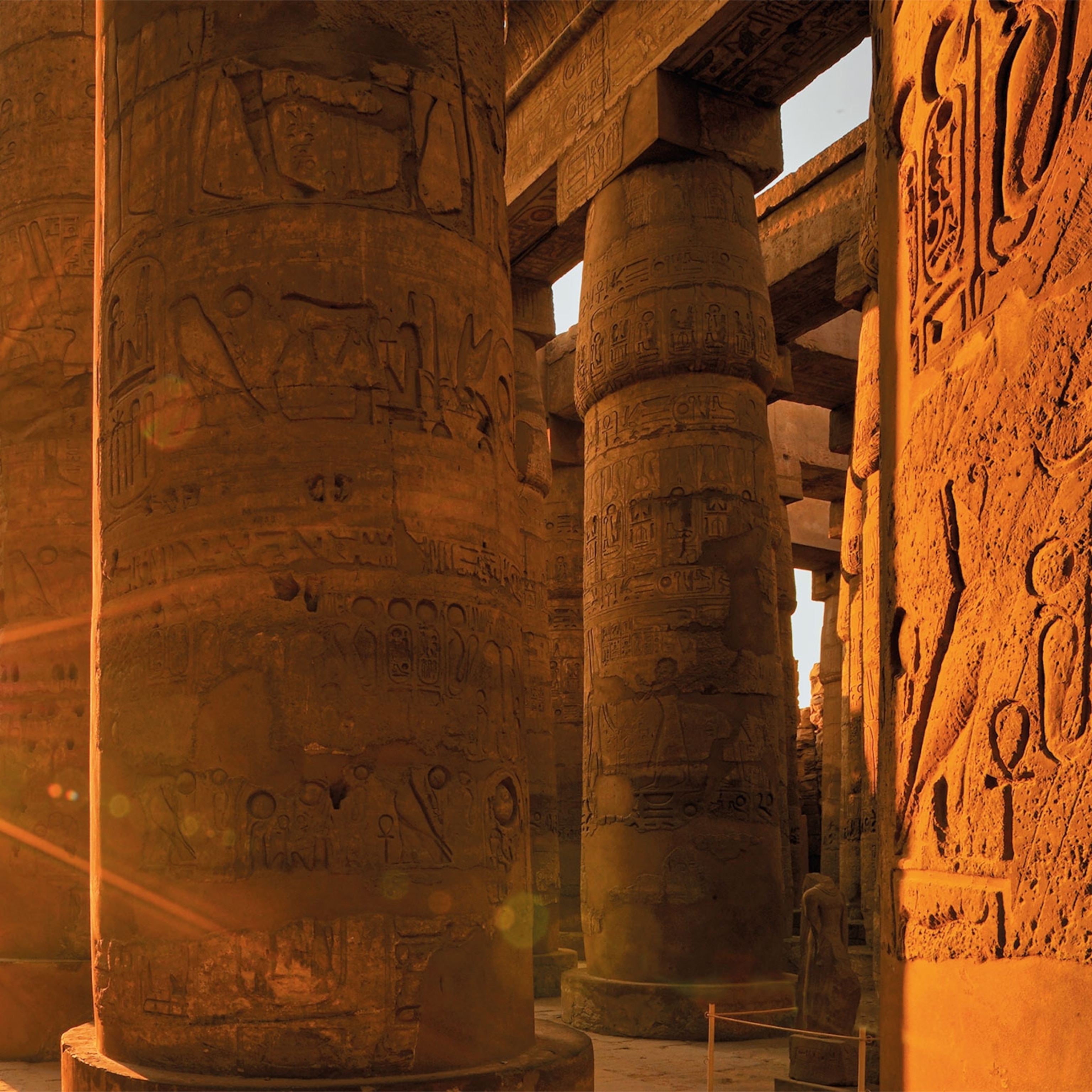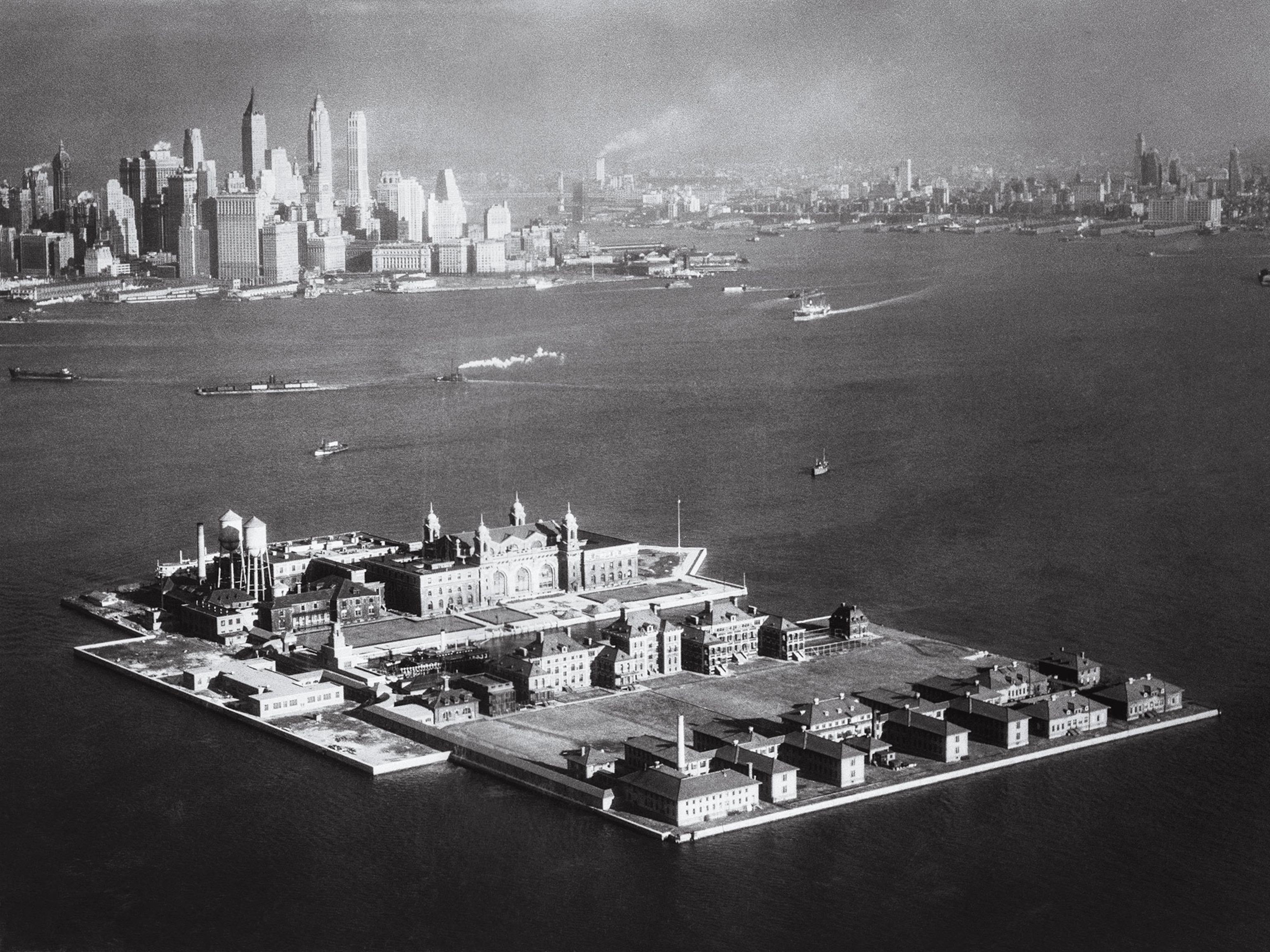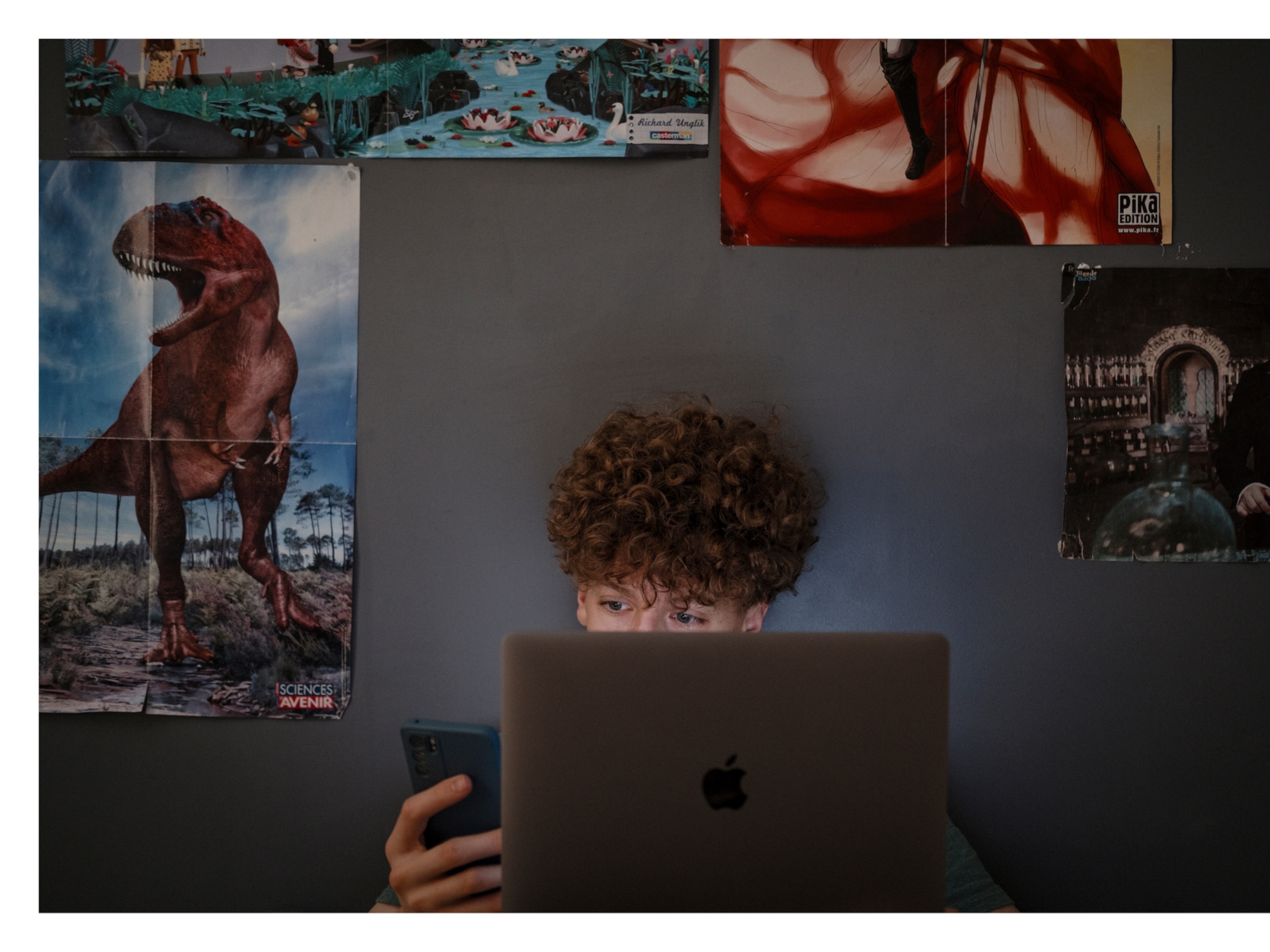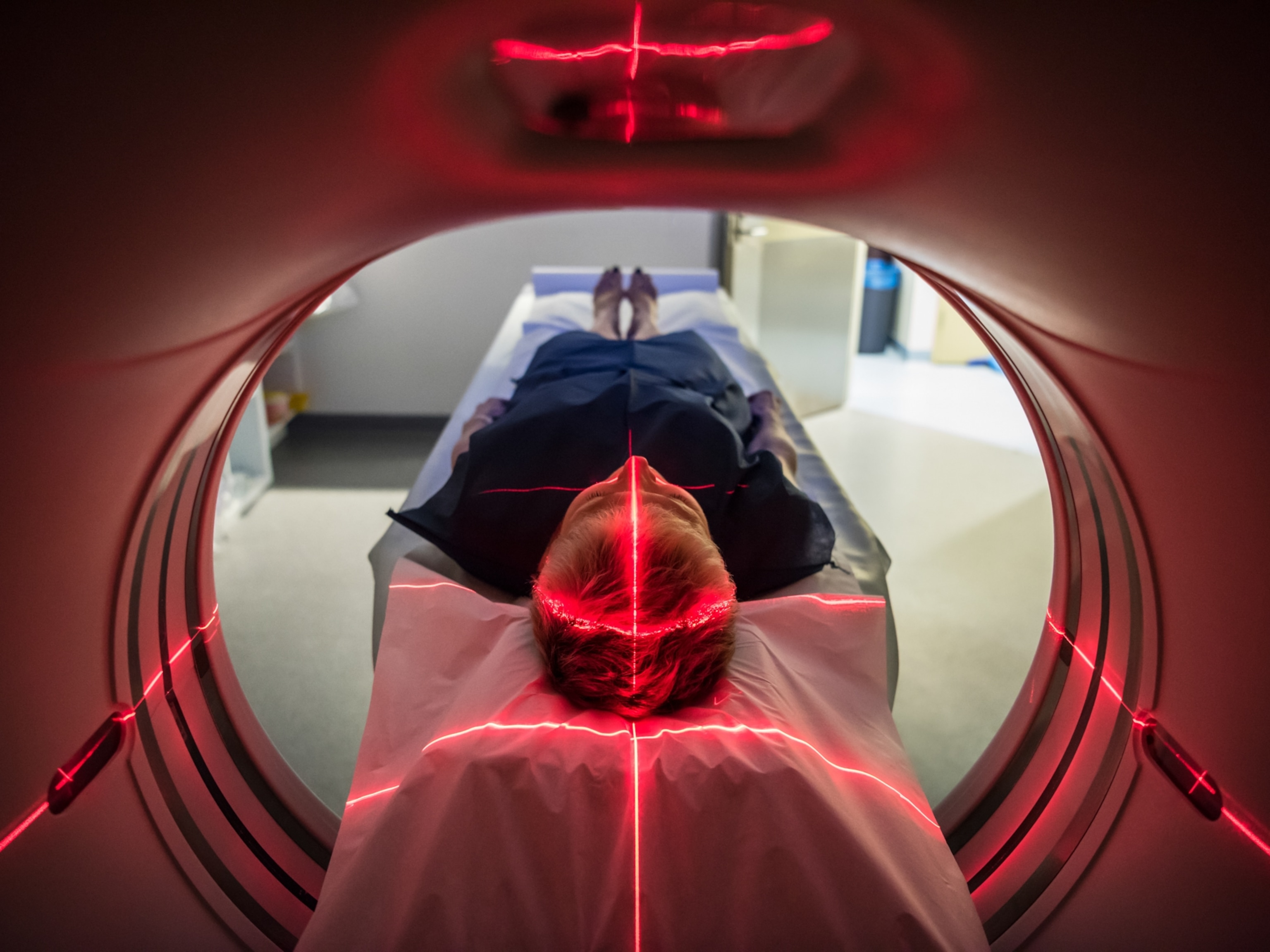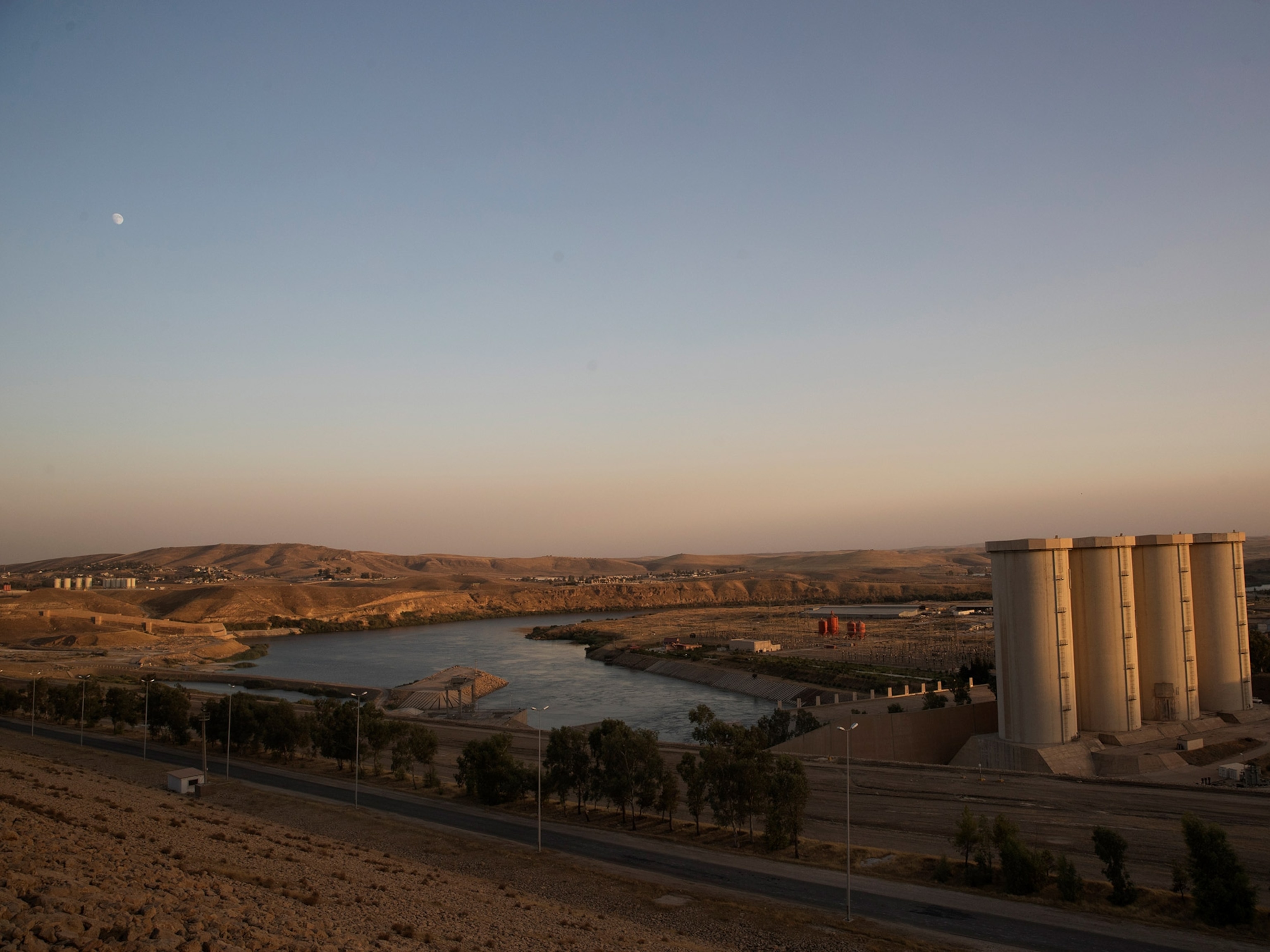
How photography helps us make sense of this unforgettable year
A deadly virus. Lives in lockdown. Passionate calls for justice. The images of 2020 reflected the humanity of a turbulent time.
The sight is charming and, in all but one respect, familiar.
A young couple in their wedding finery—his sharp suit, her elegant veil—are in church, completing their marriage formalities. She stands close at his shoulder as he writes in the register. The priest looks on, his elbow on the counter, avuncular and affectionate. An ornate metal crucifix in the foreground and a wooden one on the wall behind the couple sanctify the scene. But there is something else. Bride and groom are wearing cloth face masks that match their formal attire. The priest, too, wears a mask, and a plastic visor with an attached transparent face shield.
One year ago this photograph—made by Davide Bertuccio in the town of Barzanò, Italy—would have required interpreting. As 2020 ends, however, what it depicts is instantly clear. The scene is an entry in a new rubric, the COVID wedding. It exemplifies the awkward adjustments that people have been learning, to simply keep going in pandemic times.
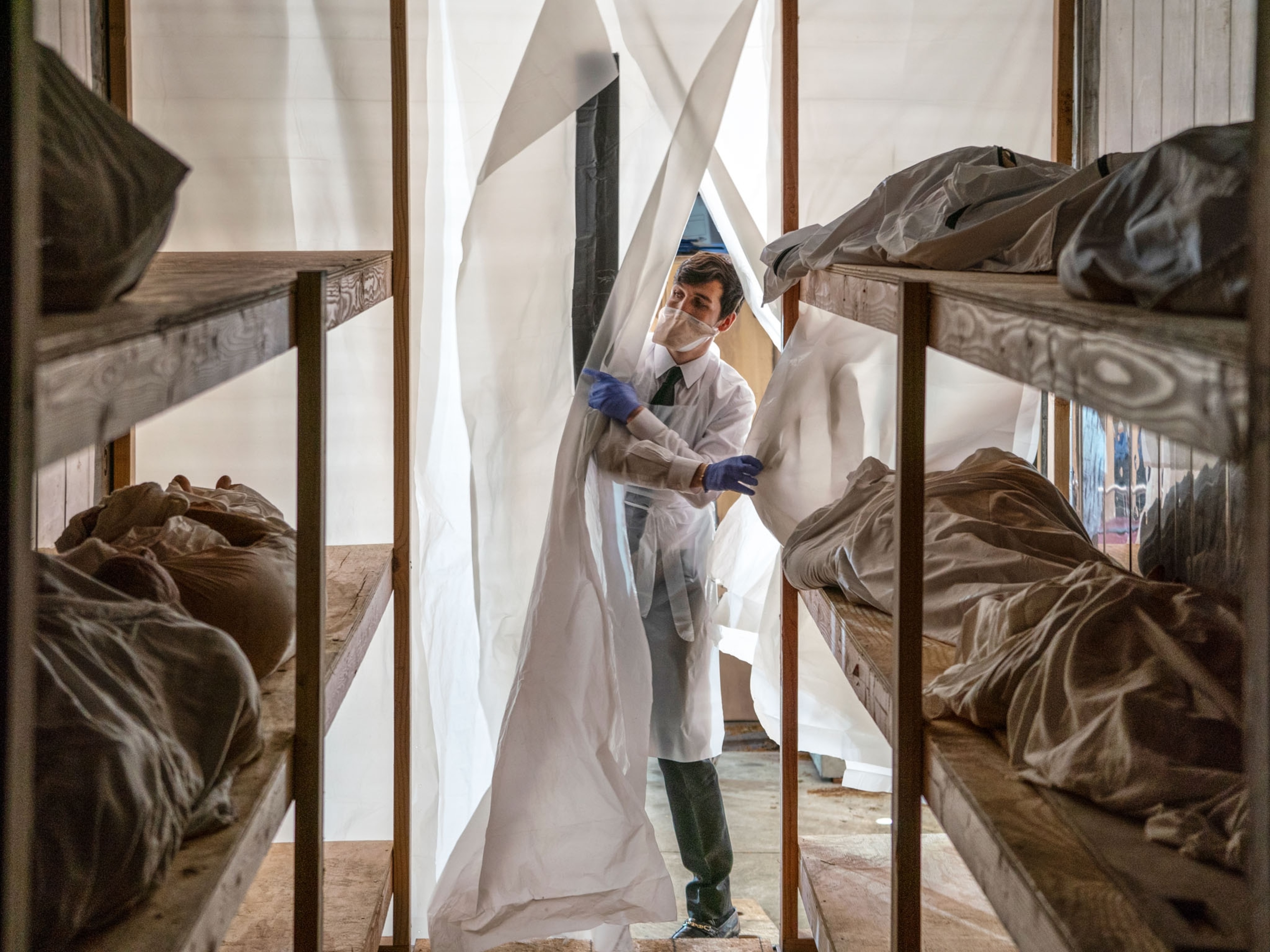
Nobody really thinks of us on the front lines. You hear about firefighters, doctors, but you never see ‘Thank you, funeral directors.’ We’re the last of the first responders.Francisco James, Resident funeral director at Leo F. Kearns Funeral Home
No single image can encapsulate the disruption of a year in which a highly contagious respiratory illness galloped across the planet, shut borders, shrank economies, and upended daily life. But in these newlyweds—obeying new sanitary protocols as they celebrate their union in Lombardy, a region that the virus hit hard—we recognize the urge, and the need, to find the normal in abnormal times.
It was a relentless year. It felt as if eras were ending. Beyond the human toll—the deaths, the lingering effects on survivors, the stress on hospitals and caregivers—the economic fallout was acute. In wealthy countries, joblessness climbed. In poorer countries, existing deprivations worsened. Border closures, the near cessation of travel, and supply chains in disarray seemed to end the notion that globalization was reversible. In the United States the virus flourished, aided by a dysfunctional response. It was fueled by deep social and economic divisions and intense political acrimony. The end seemed at hand for the “American century” as the world’s preeminent power drifted from its alliances and commitments. The world could not take its eyes off the United States. Amid the pandemic, yet another egregious police killing of a Black American, George Floyd, in Minneapolis, Minnesota, forced a tipping point. Led by the Black Lives Matter movement, protests swelled through the summer, often meeting a harsh response from police, and sometimes from self-appointed militias and vigilantes.

U.S. history seemed at stake as never before. Connecting past to present, protesters also trained their ire on statues and memorials that celebrate America’s history of violence in figures such as Christopher Columbus and, most of all, symbols of the Confederacy.
Many monuments came down. Others became gathering points, improvised laboratories of civic imagination—notably the statue of Confederate general Robert E. Lee in Richmond, Virginia, as seen in Kris Graves’s photo.

Every event seemed to intensify the national madness: devastating wildfires on the West Coast, the death of Supreme Court Justice Ruth Bader Ginsburg, the coronavirus infection of the president. The planet watched the calamity, mesmerized. For many it felt at once alarming and exhausting, a kind of collective out-of-body experience.

As daily coronavirus infection rates reached new highs in November, the U.S. election bred contested results and institutional calamity. The most dire fears of a disrupted election did not materialize, but the narrow vote margins and lengthy counts in several states frustrated an impatient public. The results reflected a country deeply divided and prey to social antagonism and conspiracy theories.
How did photography capture such a year? The first task was to compile the record. The advent of digital culture has confirmed photojournalism as the most immediate, impactful tool for documenting our times. The industry already was growing, as more accessible tools to make and show photographs invited fresh talent from new perspectives. It was building in insight, as women, LGBTQ, Black, and Indigenous photographers and their allies forced reflection on history, trauma, and dignity. And it was exploding within reach, thanks to smartphones, fast internet connections, and digital platforms—particularly Instagram—that swelled the torrent of images at wide disposal, tending toward saturation. In this respect, photojournalism was ready.
But the task was more complicated than just documenting. In 2020 the need for images sharpened as the physical horizon narrowed. The lockdowns, social-distancing rules, and fear of infection combined to transform, in ways still taking form, the terms of social interaction. Much of life moved to the screen, with everything from business meetings to art shows morphing into digital formats. In a time of sudden isolation, image streams that already were overwhelming and addictive became lifelines. “Doomscrolling,” the habit of endlessly perusing media feeds to see the latest horrors, was morbid, perhaps, but essential for some to stay informed and connected.

We know that democracy is fragile. It must be tended. My father voted in every election. They’d damn well better count my vote.KRISTAN SMALL
To make and share images under these circumstances called for more than professional competence. It called for care. Self-care, first of all, by the photographers compelled to chronicle historic events even as journalists, like everyone else, were restricted in movement—and who risked contagion when they did move about. It called for ethical care for the photographers’ subjects. It called for the understanding—arguably long overdue—that no one is safe, everyone is anxious, and yet, like the newlyweds of Barzanò, we are all trying to find a way forward.
Like all edited portfolios of photographs that National Geographic published in 2020, this selection has certain emphases and skews. It represents an effort, guided by the magazine’s tradition and sensibility, to provide some context for the year.
The dominant themes, appropriately, are the pandemic and the protest movement. In a way these infiltrate all the work shown here, as the combination of these events has so much influenced the way American readers in particular have experienced the year. The view expands to science, climate, wildlife, and nature, in keeping with this magazine’s long-standing concerns. The images are a reminder that work in these fields did not cease in 2020—and neither did our responsibility to contend with the fundamental forces shaping our environment. Polar ice did not take the year off from melting because of the pandemic, though some pressures on the natural environment were lessened as more people stayed indoors. And in an atmosphere of intense human anxiety, perspective from the natural world has never been more salutary.
How do we live at once in long history and the condensed present? By throwing up emergency conditions, 2020 brought forward this fundamental paradox. It was a year that forced adaptation in the face of existential uncertainty. But we were not without resources. Language, for example, adjusted. Words such as “confinement,” with its evocations of a Victorian-era sanatorium, or “quarantine,” with its roots in medieval Venice, emerged from the historical murk and regained currency. New phrases sprouted: “social distancing,” “essential workers,” “Zooming”—a new lexicon for our efforts to carry on.
In these images the pull is toward humanity observed in the process of muddling through, finding a way. Many of the year’s most powerful photographs captured the fundamental human work of caring, convalescing, coping, worrying, waiting, responding, resisting, mourning. Simple work. Essential work. In a raw year the signal images did not have to be complicated. Some of the most memorable are not so much layered with information as seething with emotion.
On the bed rests a stiffened body, sealed head to toe in plastic wrapping, clearly deemed unsafe for contact. The photograph by Joshua Irwandi was made in Indonesia, but nothing in the scene reveals this. The hospital room suggests that no effort or resource was spared to save the patient. The eye moves from the body to the window. Open curtains expose a purple-blue night sky, hinting at a darkened world beyond. Reflected in the window is the fluorescent bar of the room’s light fixture.
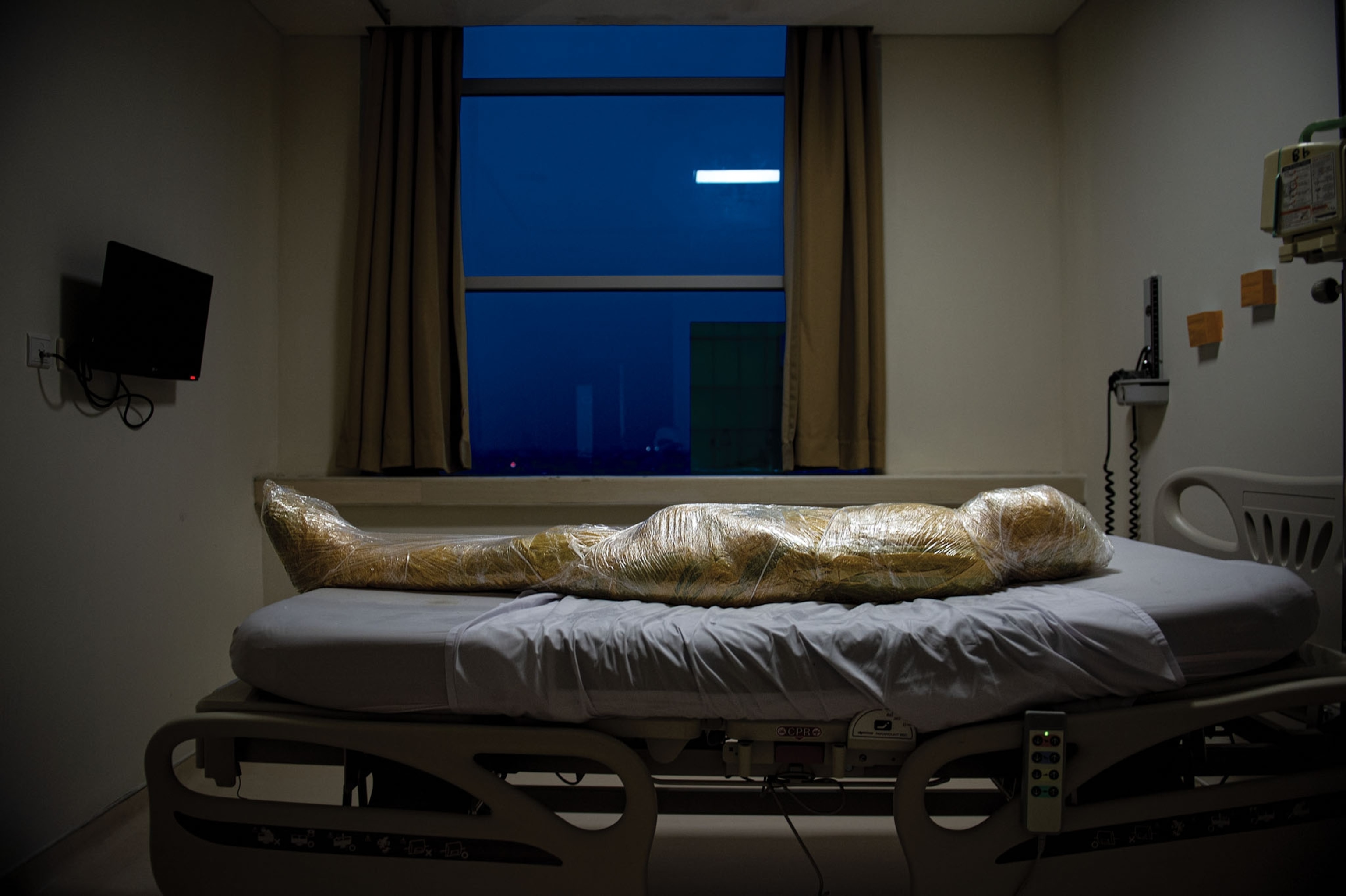
It’s a photograph of death—a victim, probably of the coronavirus, fell ill and died in the hospital. But there’s more: the sarcophagus-like allusions to ancient practices of treating the dead, the witching hour that engulfs the city, the window that beckons the soul. The hospital room signals modernity and its continuous quest for solutions. But that quest has hit a limit here, and the scene that results pushes us out of the contemporary into ancestral time.
This sense of a limit reached, a point of impossibility, recurs in the images of eerily vacated spaces. Rafał Milach’s photo of the reading room in the Jagiellonian University library in Kraków, Poland, is a geometric composition viewed from its mezzanine level as a field of desks, each with two chairs pulled up. Missing humans are suggested as ghosts by each desk’s tilted reading lamps. The absence of patrons pulls us out of the present, first by decades, in the building’s solemn mid-20th-century European architecture, then further back, via the large print reproduction that controls the space between the stacks and the skylight, to what must be medieval Kraków, dense and presumably bustling, in the middle distance behind the protagonists in the landscape.

When it might not be safe to breathe around other people, the structure and arrangements of society come into question. Eventually an answer will arrive because it must. But first everything had to stop. Around the world there was a moment when humans sheltered in isolation as much as they could, as shared spaces, public and private, shut down.
In Yogyakarta, Indonesia, a new airport opened one month before COVID-19 stopped aviation. In Muhammad Fadli’s photo of the road approaching the facility, streetlights cast a bleary glow over a deserted landscape of grass patches, asphalt, and concrete. Newly planted saplings in the foreground are the sole sign of life. They’re still propped and guided by posts, fragile, as if hostages to human hubris and overbuilding.
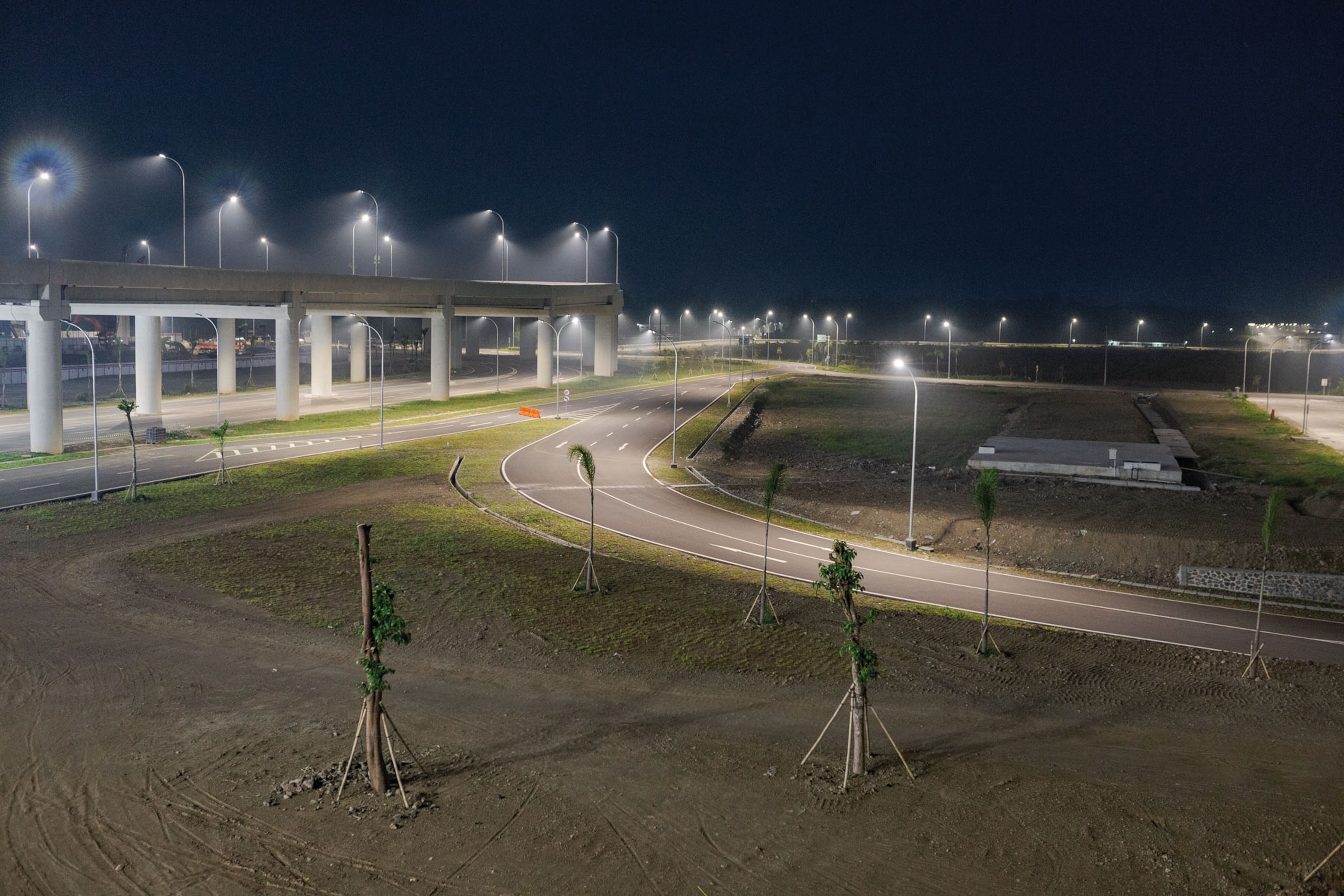
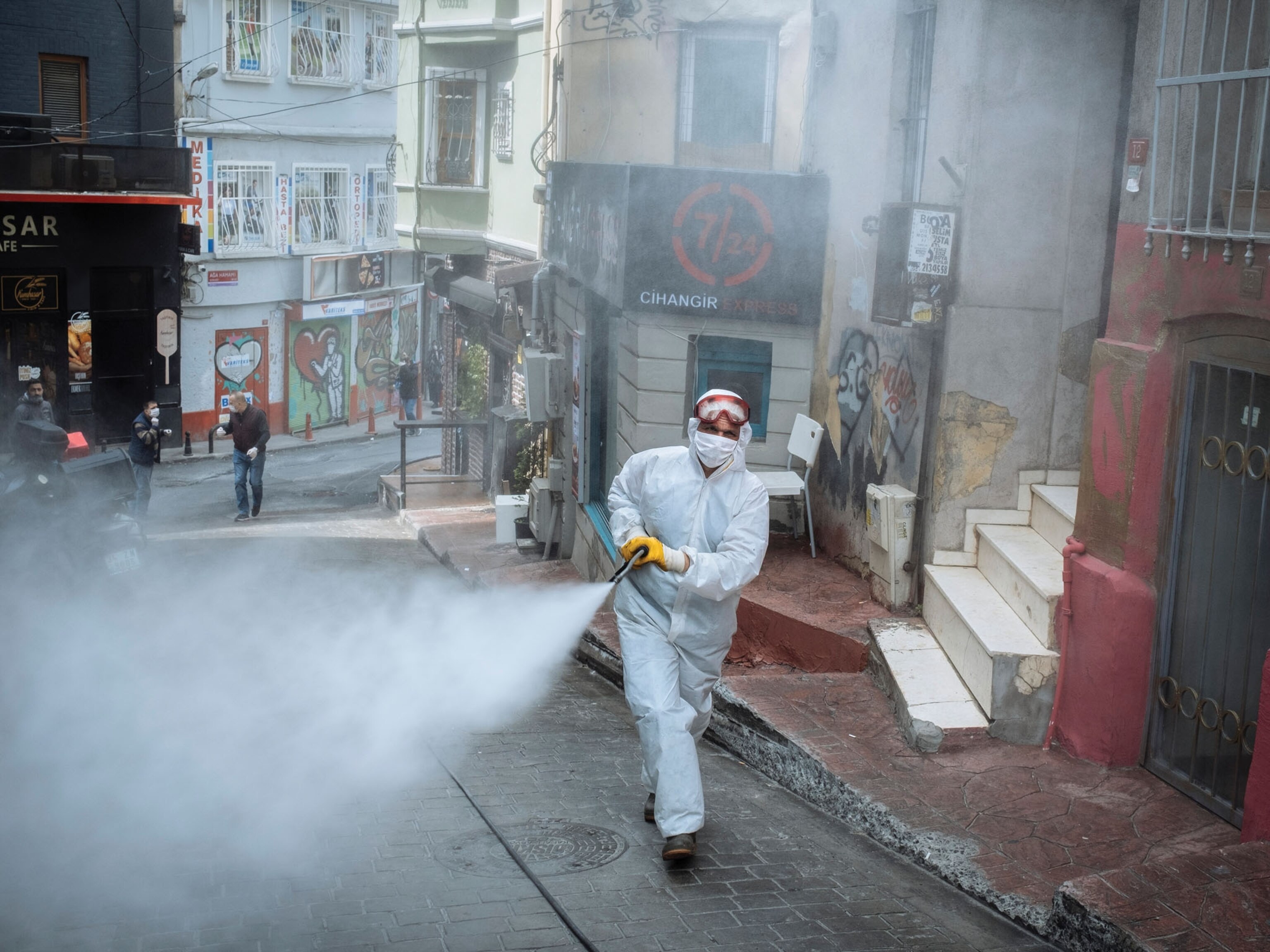
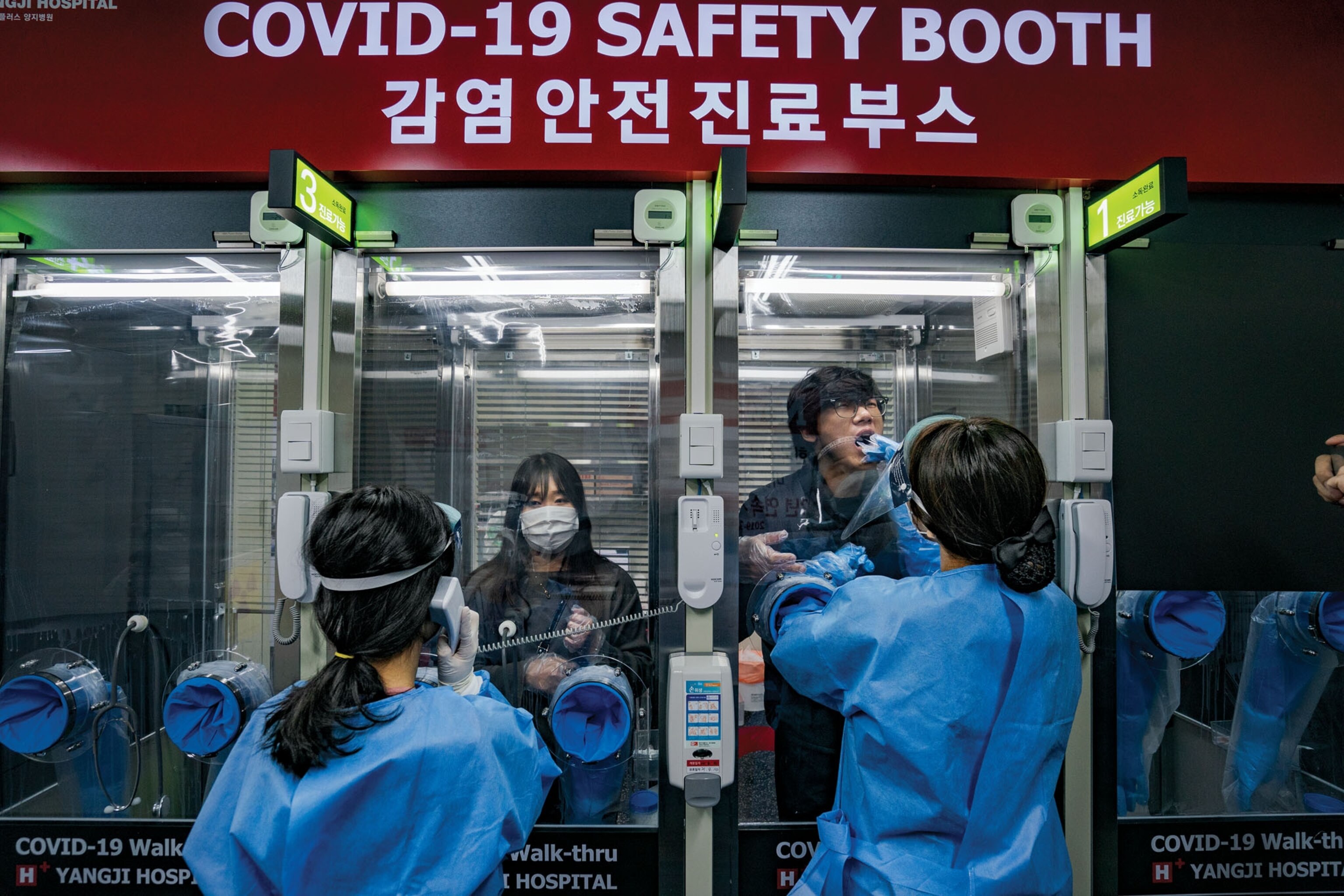
There’s action, by contrast, in Emin Özmen’s image of a worker in head-to-toe protective gear cleaning a street in Istanbul, Turkey. Disinfection was a visible response to the crisis, though as the contagion dynamics were better understood, such steps were decried as “hygiene theater.” Jun Michael Park’s photograph of activities at a walk-up testing clinic in Seoul, however, brims with competence. We experience the scene from the health workers’ point of view. Equipped and protected, they administer the swabs through a tube arrangement that runs from the glassed-in booth. This vignette of South Korea’s swift health response is a symbolic indictment of other countries’ travails.
It might have been tempting to portray 2020 as an arriving dystopia. New York City, where this essay was written, felt haunted in late March and April: a great metropolitan silence, cloaking the careful movements of those deemed essential, who traveled with maximum economy of words and gestures—all scored by the endless wail of ambulance sirens. Variants of this shock had been felt already at high intensity in Wuhan, China; Bergamo, Italy; and other places.
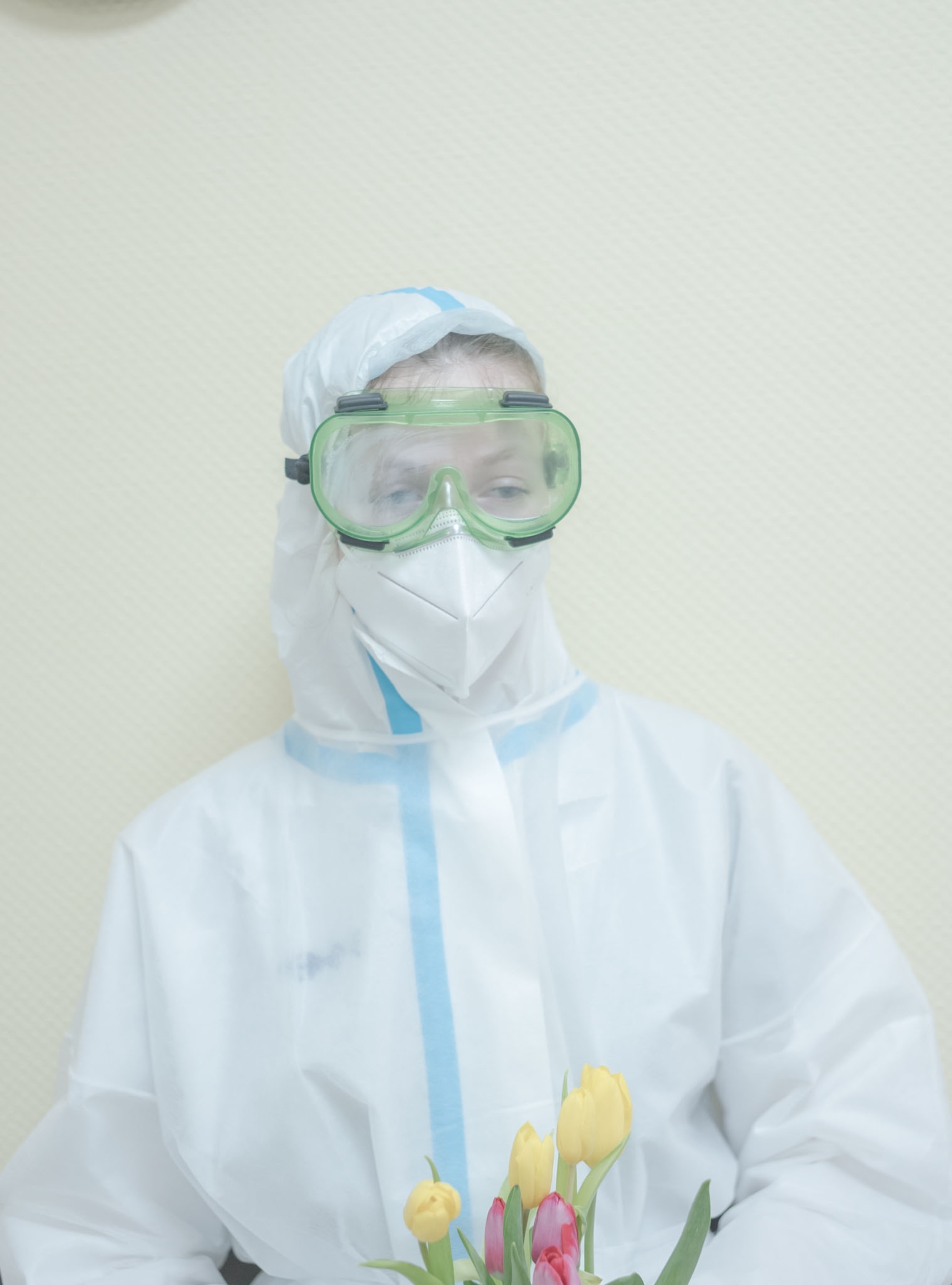
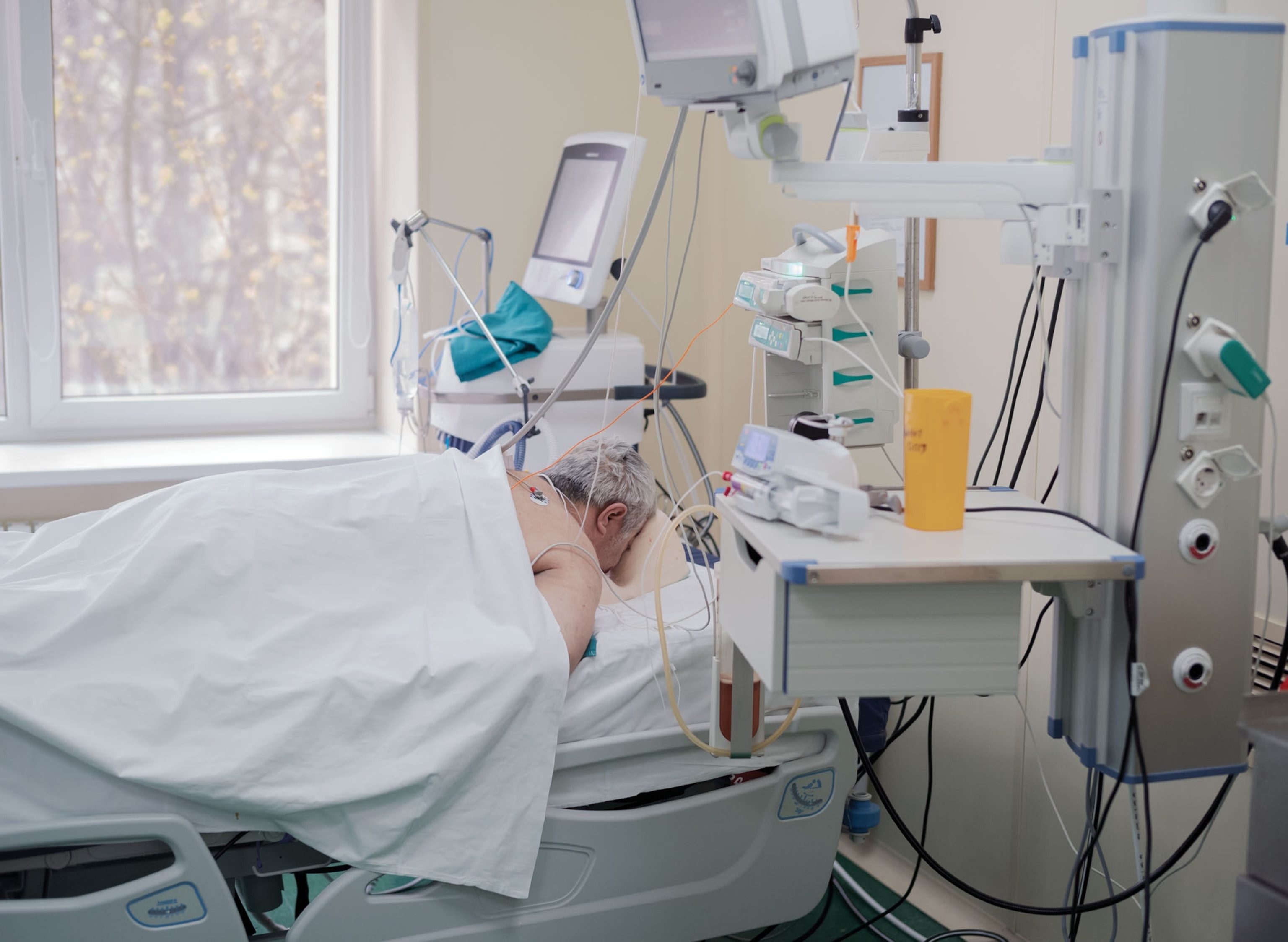

At that moment one could emphasize the morbid strangeness, the sadness and trauma in hospitals, the throb of machinery. Two portraits by Nanna Heitmann, made in a Moscow hospital, present as well as any the simplification of human relations into two archetypal roles, patient and caregiver. Cédric Gerbehaye’s black-and-white image of two nurses in Mons, Belgium, taking a break conveys the daunting scale of their task: They seem small, crouched on a curb against a wall—yet their affectionate stance reveals the solidarity that links them.
We have references for the photography of medical crises. Nichole Sobecki, who has an image in this portfolio of a musician in Nairobi, Kenya, performing the coronavirus awareness song he composed, was on assignment for National Geographic in the Democratic Republic of the Congo in 2019, photographing an outbreak of Ebola. The West African Ebola epidemic of 2014-16 primed viewers for the spacesuit-like apparel and tent hospitals. (It’s worth considering whether COVID-19 patients in rich countries, and white patients especially, were offered more dignity in their portrayals than Liberian Ebola sufferers.)

The genre goes back, in fact, at least as far as the influenza pandemic of 1918 and a fascinating set of period photographs that, filtered by generations of archivists, tend to recur in most presentations. Their scope is relatively narrow: field hospitals, medical staff, social hygiene. They trigger echoes and offer some pointed lessons—for example, a trolley in San Francisco, the conductor on its step, preparing to verify that boarding passengers are wearing masks, as required. But such photographs are far from a panoramic account of the flu’s ramifications.
Today’s flood of images and their mass circulation, by contrast, present the opportunity of archival abundance and tell many stories. The virus, as we know, did not go away in 2020. It settled in and merged into each country or city’s ongoing social history.
Police in Louisville, Kentucky, killed Breonna Taylor on March 13, 2020. Information about the case emerged gradually over the next two months. Police in Minneapolis killed George Floyd on May 25, 2020. In late May, protests erupted in both cities and soon across the country, sparked by the extreme brutality of these two deaths of unarmed Black Americans—one shot in her home during a botched raid and left for a crucial time without medical attention, the other suffocated under a policeman’s knee—atop the macabre parade of similar incidents in recent years.
In that sense the deaths were grimly familiar, as were the protests complete with confrontations with militarized police and National Guard troops and varying degrees of property destruction. But a distinctive change appeared in the images. It marked them of this moment—the masks signaled the stress and risk of protesting amid a pandemic. It marked the moment as transforming, no more so than when the protests mobilized around monuments that celebrated racists from the past, giving rise to a wave of topplings—some conducted by protesters, others decided by local authorities—unlike anything in Americans’ memory.
By June the hub of U.S. visual culture was arguably Richmond, Virginia, where the monuments were the grandest and came down fast, by decision of the mayor, after protesters began by pulling down a statue of Confederate president Jefferson Davis. The exception was a huge equestrian statue of Robert E. Lee that came under the purview of the state rather than the city government, and whose removal, promised by the governor, became tangled in legal challenges. Instead, community members “recontextualized” the statue and its circular plaza by graffiti, protests, performances, photographic projections by local artists, and even a vegetable garden. Activists planted signs informally renaming the plaza in honor of Marcus-David Peters, a Richmond man who died at the hands of police in 2018. It was the most vibrant American civic space of 2020: grassroots and unauthorized action attesting to great historical shifts under way. Kris Graves’s photograph of the statue seems to acknowledge that today’s combat is between Goliath and not one, but myriad Davids, gathered in their diversity.
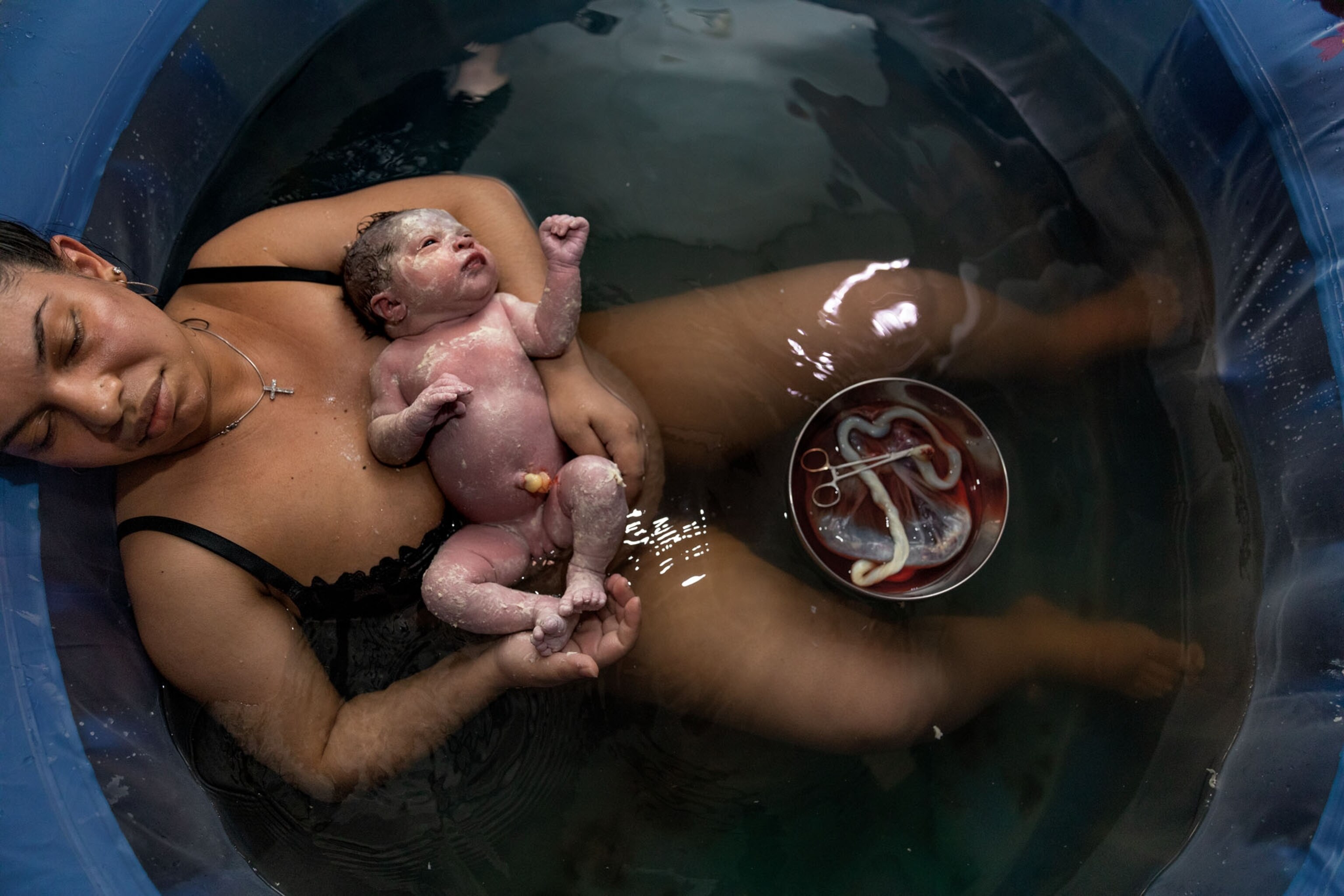
The image reflects an evening projection by Richmond artists Alex Criqui and Dustin Klein. Over the pedestal appears the face of George Floyd, whose strong, solemn traits evoke sculptural traditions of their own. The Confederate general is grandly silhouetted against orange-gray cloud, but across the horse’s flank appear the letters “BLM,” for Black Lives Matter. The multicolored slogans are now in the penumbra, in the image’s lower part. Here is a kind of exorcism, conjuring demons present and past. Yet the projection is ephemeral, as is the civic reclamation of this place. The future of the statue—and by implication, the old order—is unknown. The situation is provisional, making the moment all the more poignant.
How are we to live in provisional times? The year 2020 was about canceled plans and unsatisfactory adaptations, from masks to Zoom calls to families facing impossible decisions among improvised models as a new school year began. Domestic photographs, of household life in times of distancing, conveyed the changed circumstances.
In Jackie Molloy’s photograph of a New York City mother and her home-birthed baby is a hint this choice might become more common. Many photographers turned inward, documenting life in a limited perimeter. Alessandra Sanguinetti’s image, made near her home in California of her daughter’s socially distanced, outdoor visit with a friend, or Ian Teh’s self-portrait with his wife as they recline on a couch by the window and look out at Kuala Lumpur, Malaysia, are examples of the resulting, wistful subgenre. Slowing down, it turned out, had merits as well. In an unhealthy year, rest was essential for resilience and resistance.
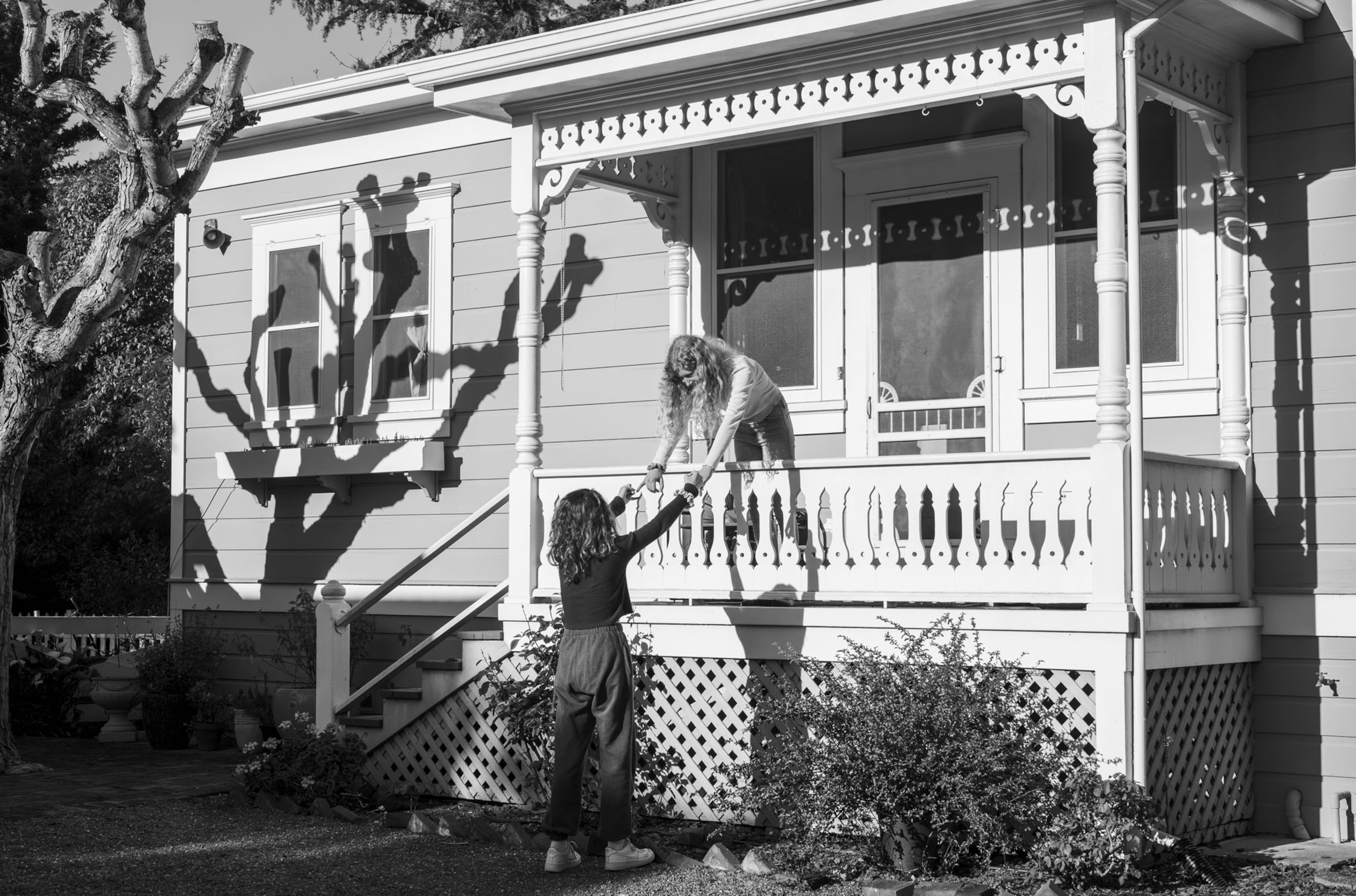
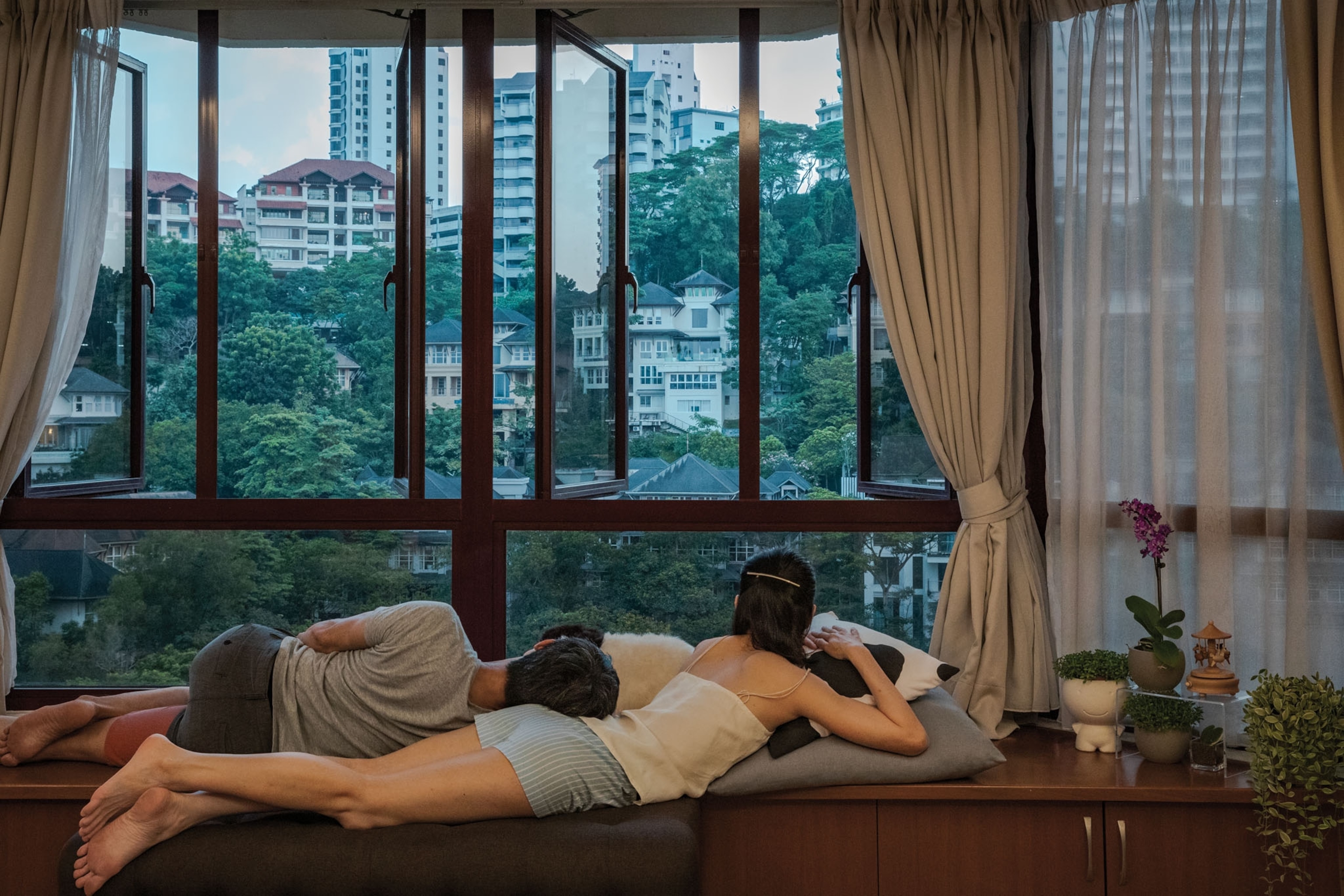
The problem, at its root, was trust. The reality of asymptomatic spread, with its implication that anyone you met might be carrying the disease, and so might you, brought home a collapse of social confidence.
Trust in government seemed to be demolished by the mediocrity, corruption, and authoritarian tendencies of politicians. For many, trust in business and the wisdom of the marketplace was overrun too, exposed by abysmal inequalities. Demagogues stirred racism, xenophobia, and the rejection of science. Partisan cable channels and the relentless algorithms of social media fortified cocoons of self-reinforcing prejudice. Conspiracy theories spread. By the time it became clear that an easy step toward defeating the pandemic was to wear face masks, many societies confronted a lethal shortage.
The collapse of social trust was too total a phenomenon for photography—or journalism, or art—to somehow repair. But it was deeply relevant to the work. It raised the stakes.
The effort to reconsider the ethics of photography, to face the past and ongoing harms of the racist, colonial, and anthropological gaze, must continue, but it’s not enough. Attention to dignity and agency, to damage from emotional bombardment and recirculation of images of trauma must continue. But they’re not enough.
In a time when trust is damaged, the question is how images can contribute to care and mutuality, to stitching a more equitable society. The possibility is there, percolating. One might be inspired by the mobilization of photographers and artists of Beirut, Lebanon, after 2,750 tons of ammonium nitrate left for years at the port exploded on August 4, causing massive destruction. They photographed and shared images, but also took charge of the narrative, giving shape to the story before the traveling press arrived. They joined efforts to clear rubble and locate survivors; launched fund drives for the most vulnerable, such as migrant workers; and used social media to forge connections with outside supporters and hold to account the government’s crisis response.
“It is very difficult for me to take pictures in this nightmare,” Beirut photographer Myriam Boulos wrote on Instagram. “But I feel like we have to document, document, and document.” Looking at 2020 was complicated: ethically, logistically, emotionally. But we had to look. Out of that imperative to document, as Boulos noted. And because looking, interpreting, and trying to form understandings are things that humans do.
Perhaps we will find that 2020 has helped us to see.


